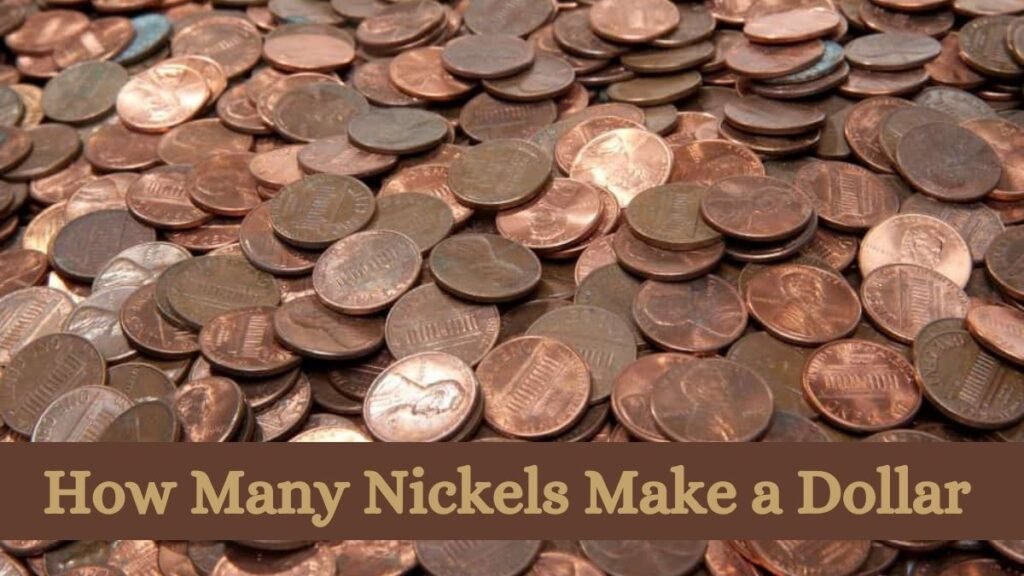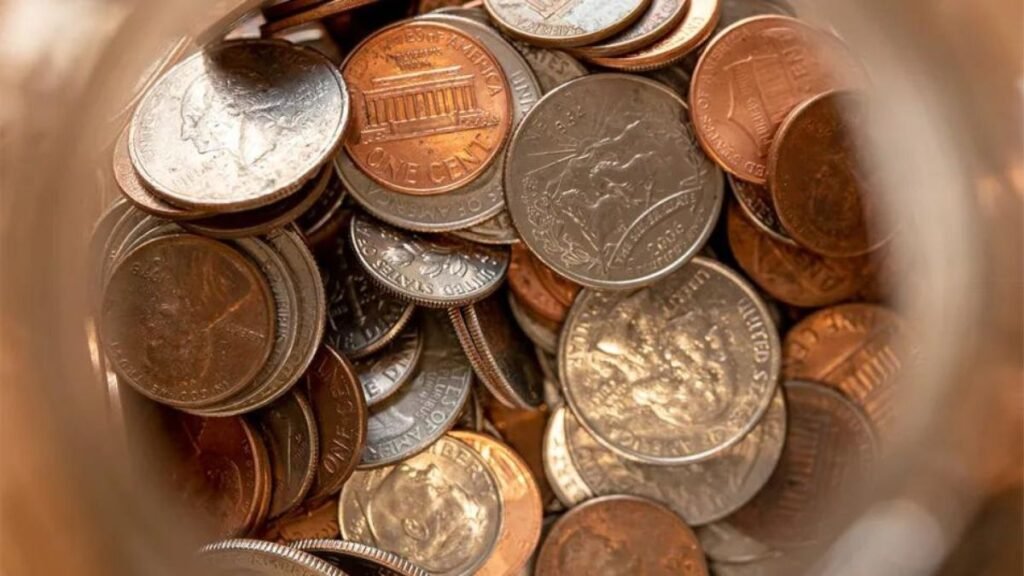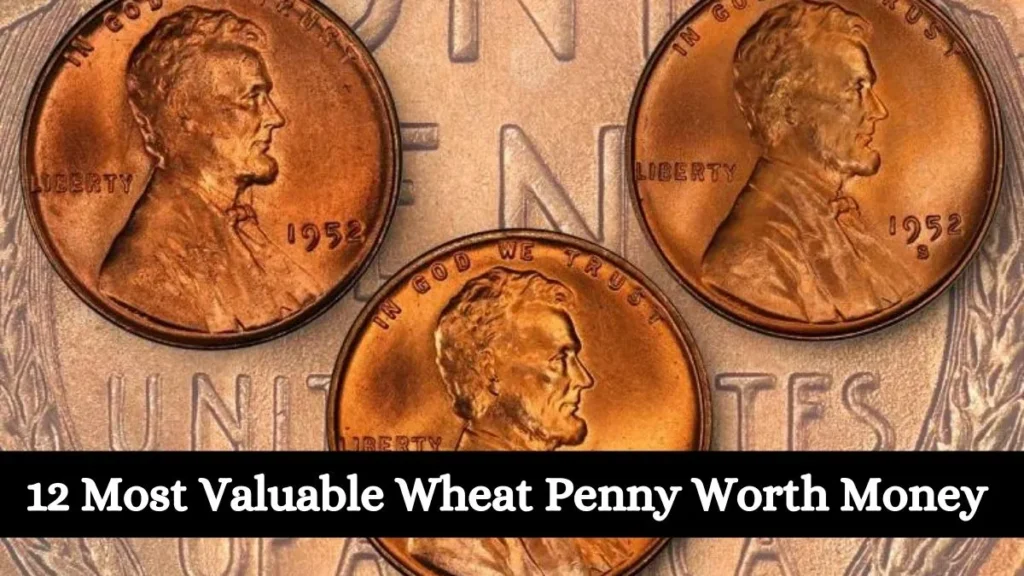If you’ve ever wondered exactly how many nickels make a dollar, the quick answer is: It takes 20 nickels to make a dollar.
In this comprehensive guide, we’ll explore various aspects related to nickels and their connection to the U.S. dollar. We’ll cover the history of the nickel, its current design, metal composition, and delve into different mathematical concepts associated with counting nickels. Additionally, we’ll provide real-world examples where counting up nickels to reach a dollar proves to be useful.
Related Why is The 1914-D Penny Worth So Much
How Many Nickels Make a Dollar
Recognizing the denominations of currency
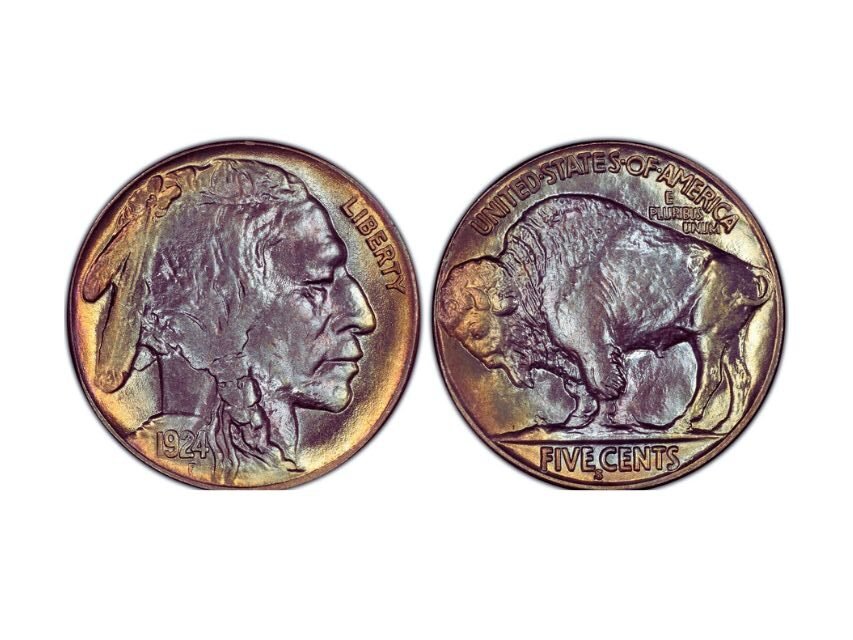
Absolutely! A nickel is a coin valued at 5 cents, composed of copper and nickel. It displays Thomas Jefferson on one side and Monticello on the reverse.
On the other hand, a dime holds a value of 10 cents and is also made of copper and nickel. It features Franklin D. Roosevelt on one side and depicts a torch, olive branch, and oak branch on the reverse, symbolizing liberty, peace, and strength.
In a straightforward comparison, it’s evident that a nickel is worth half the value of a dime.
Related How Many Nickels and Dimes Make a Dollar
How many nickels make a dime?
When evaluating the value of coins, it’s essential to grasp the relationship between different denominations. In this instance, let’s explore how many nickels are equivalent to a dime.
To find out how many nickels make a dime, we divide the value of a dime (10 cents) by the value of a nickel (5 cents). The calculation is straightforward: 10 divided by 5 equals 2. Therefore, it takes two nickels to equal the value of a dime.
This basic math shows that a dime holds a value twice that of a nickel. So, if you have two nickels, you can exchange them for a single dime. Understanding these conversions proves helpful when counting and exchanging coins.
The Design And History Of Nickel
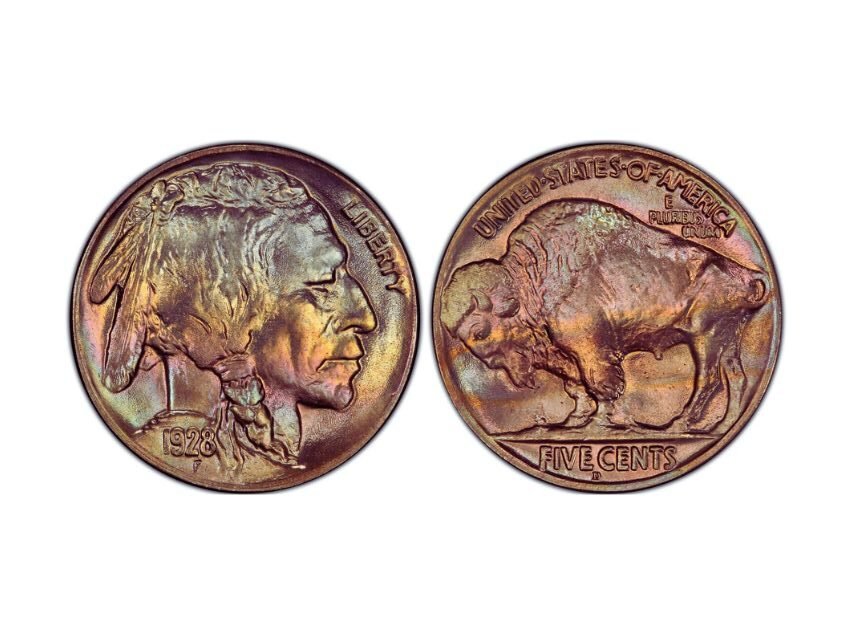
The nickel coin boasts a fascinating history dating back to the mid-19th century. Its name is derived from the metal it was originally composed of – nickel.
The first nickel coins were introduced in the United States in 1866, addressing the growing need for a coin with a higher value than the copper or silver coins in circulation at the time.
The initial nickels featured a design known as the Shield nickel, showcasing a shield on the obverse side and the number “5” surrounded by stars on the reverse side.
As time passed, the design of the nickel underwent various transformations. In 1883, the Liberty Head nickel was introduced, highlighting a portrait of Lady Liberty on the obverse side and a large “V” (Roman numeral for 5) on the reverse side.
This design was later succeeded by the Buffalo nickel in 1913, which featured a Native American chief on the obverse side and a buffalo on the reverse side.
In 1938, the Jefferson nickel made its debut and continues to be the design used on the nickel coin today. This design features a portrait of Thomas Jefferson, the third President of the United States, on the obverse side and Monticello, his Virginia estate, on the reverse side.
The value and purchasing power of nickels

Nickels are an integral part of our currency, holding a value of 5 cents each. In everyday transactions, these coins play a crucial role in our wallets and pockets.
The term “nickel” not only signifies the coin’s value but also reflects its composition, primarily made of nickel along with copper.
Since 1866, the United States Mint has been consistently producing these coins, and they continue to be a fundamental component of our monetary system.
What Nickels Can Be Purchased Right Now
Even though a nickel may not seem like much, it still holds purchasing power today. The value of a nickel has evolved over time due to inflation and the increasing costs of goods and services. Despite this, there are still various items you can buy with a nickel.
For instance, you can purchase a single piece of candy, a small gumball, or even a sticker from a vending machine using a nickel. Some stores may also have special promotions where items are available for just a few cents, allowing you to use your nickels for a purchase.
While it may not represent a significant amount, it’s a fun way to utilize those nickels!
It’s worth noting that the value of a nickel goes beyond its face value. Some individuals collect rare or valuable nickels, which can be worth much more than their initial 5-cent value.
If you’re curious about valuable nickels or interested in delving into the world of coin collecting, numerous online resources, such as the U.S. Mint’s website, provide information about different types of nickels and their worth.
So, the next time you come across a nickel, keep in mind that it might be worth more than you realize. Whether you use it for a small purchase or decide to save it for its potential future value, nickels continue to play a meaningful role in our everyday lives.
Making Change and Counting Nickels
Counting nickels is a foundational skill that aids in understanding basic math concepts and making change. A nickel holds a value of five cents, so to determine how many nickels make a dollar, we divide 100 cents by 5. The result is 20, indicating that 20 nickels make a dollar.
When counting nickels, it’s useful to organize them in groups of five. For example, if you have 35 nickels, you can count them as seven groups of five, totaling 35. This method simplifies the process of counting large quantities of nickels, making it more efficient.
To practice counting nickels, you can engage in simple exercises. For instance, if you have 15 nickels, the question becomes: How much money do you have? The answer is 75 cents, as 15 multiplied by 5 equals 75. This practice helps reinforce basic math skills related to counting and multiplication.
Examples of Counting Nickels in the Real World
Counting nickels is a valuable skill with practical applications in various real-world scenarios. Whether you’re saving up for a special purchase or need to make precise change, understanding how many nickels make a dollar can be quite useful.
Let’s delve into some practical examples of counting nickels in everyday life.
Saving Up Nickels: A fantastic way to teach the value of money, especially to children, is by encouraging them to save up their spare change. Given that nickels are worth five cents each, they can quickly accumulate to a dollar. For instance, if a child saves 20 nickels, they would have saved a dollar.
This activity not only aids in developing counting skills but also instills positive saving habits from an early age.
Moreover, saving up nickels can be an enjoyable and rewarding challenge for individuals of any age. Whether your goal is to save a dollar, ten dollars, or even a hundred dollars, watching your collection of nickels grow can be incredibly satisfying.
It’s a practical and enjoyable way to reach financial goals while appreciating the value of each nickel saved.
Conclusion
In conclusion, although the nickel coin has a rich historical background, its present design and metal composition mirror more contemporary times. The mathematics involved in counting groups of nickels is relatively straightforward.
Nevertheless, contemplating real-world scenarios where the calculation of nickels becomes relevant strengthens the understanding of their value.
We trust that this comprehensive guide on how many nickels make a dollar has been informative. Exploring the intricacies of money offers an excellent opportunity to develop math skills in a practical and applicable manner.

